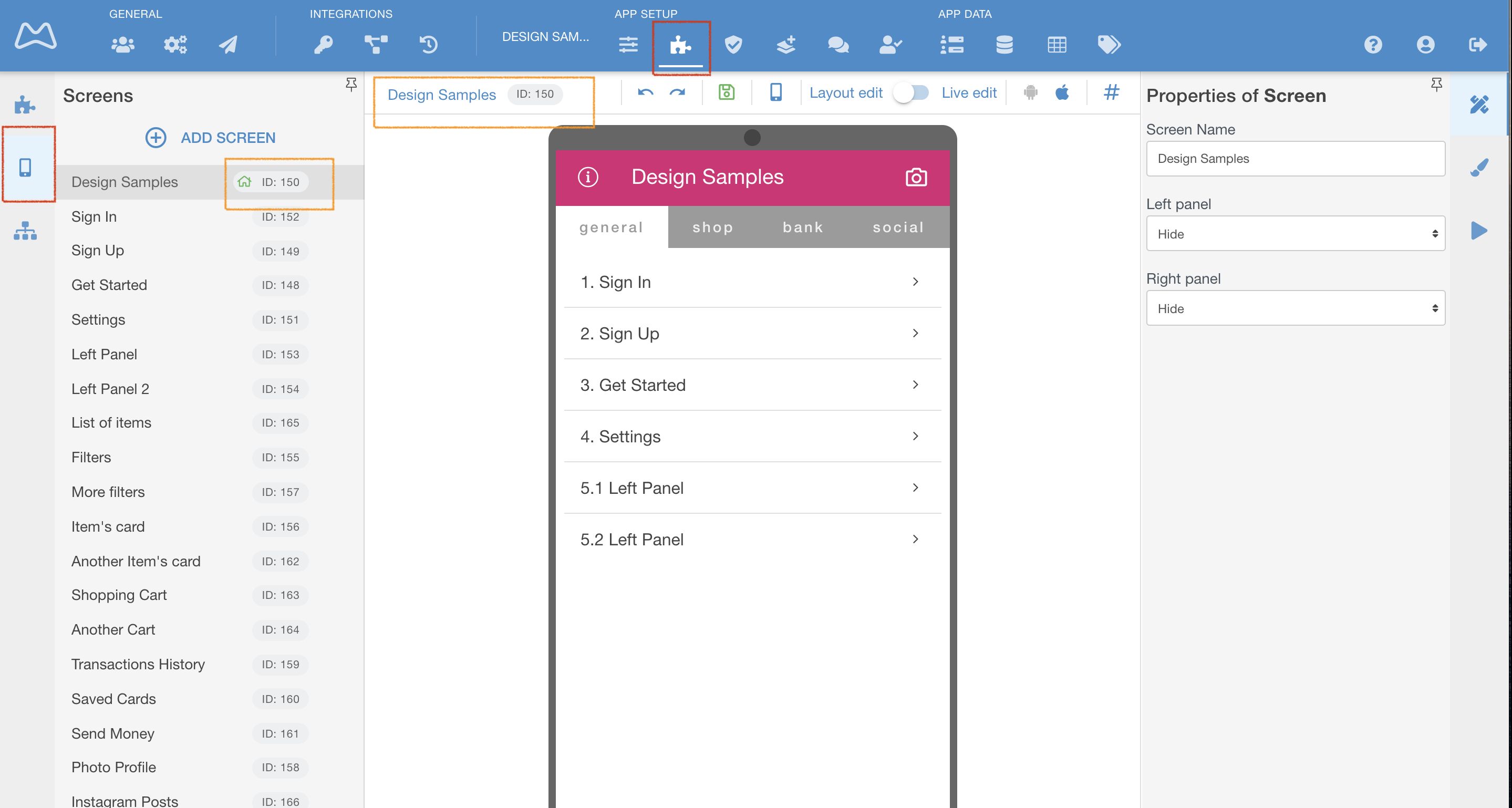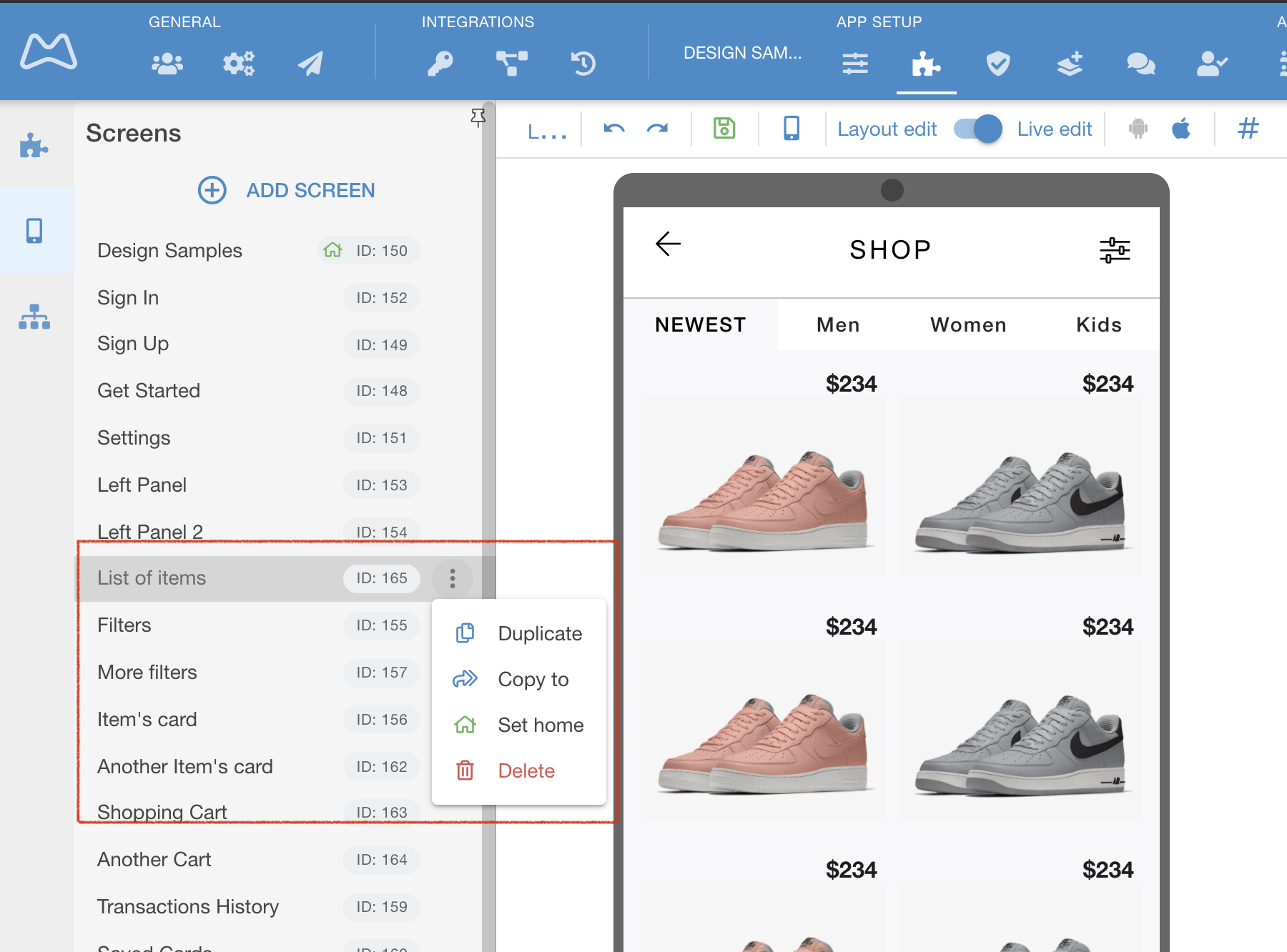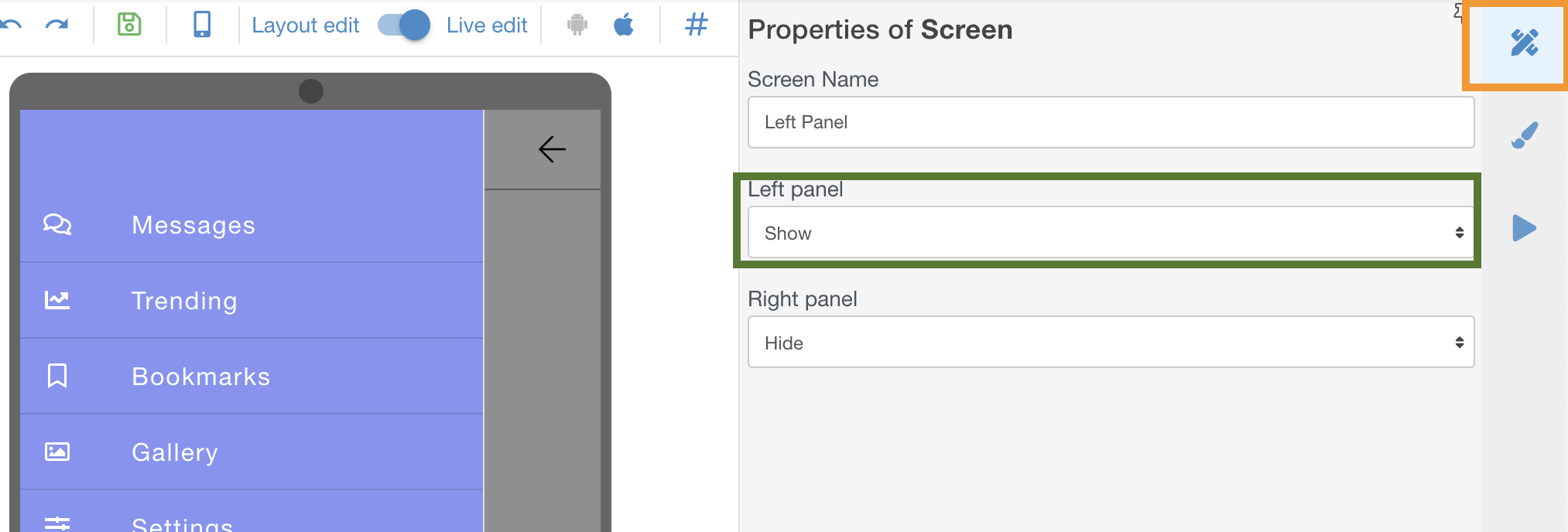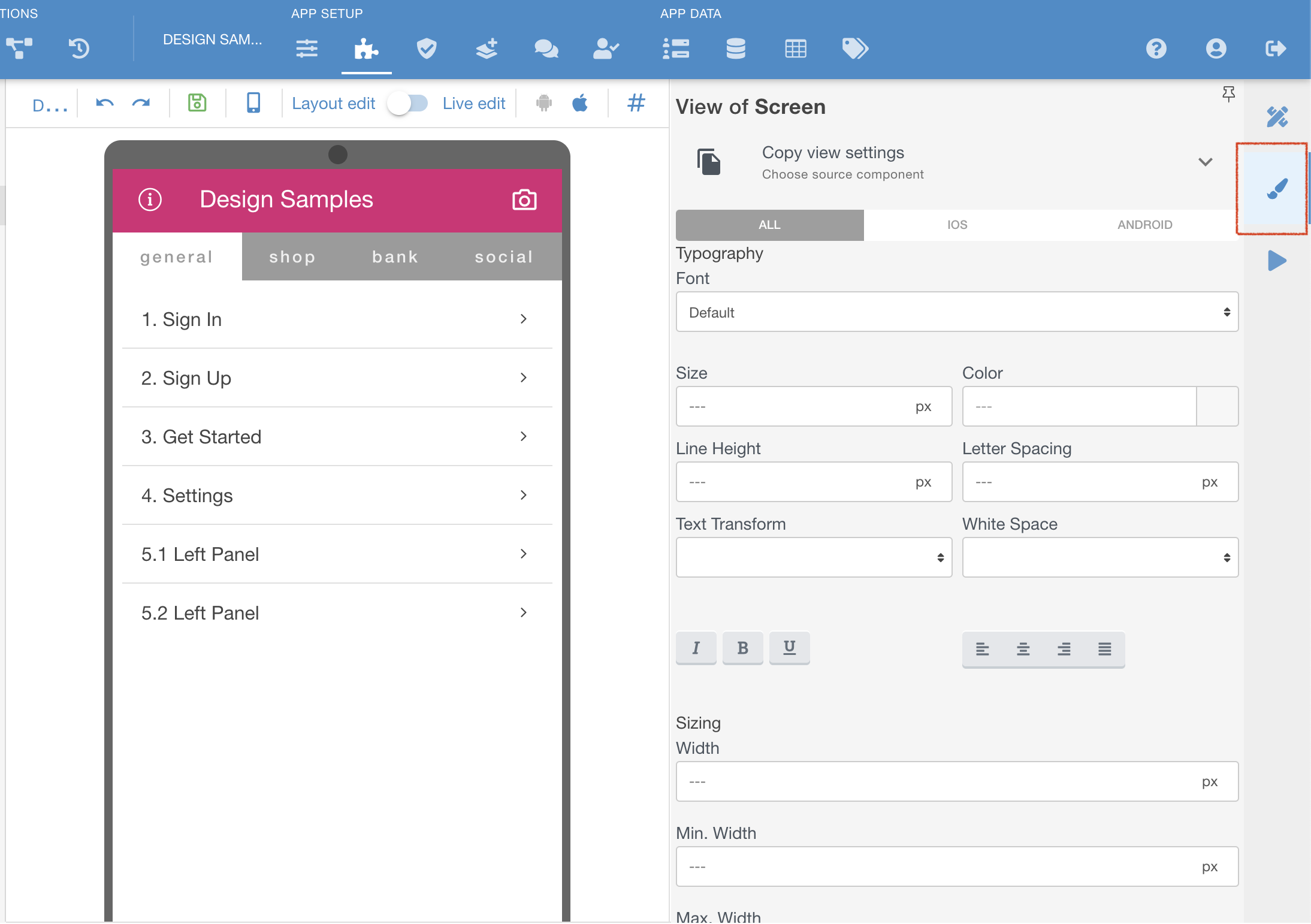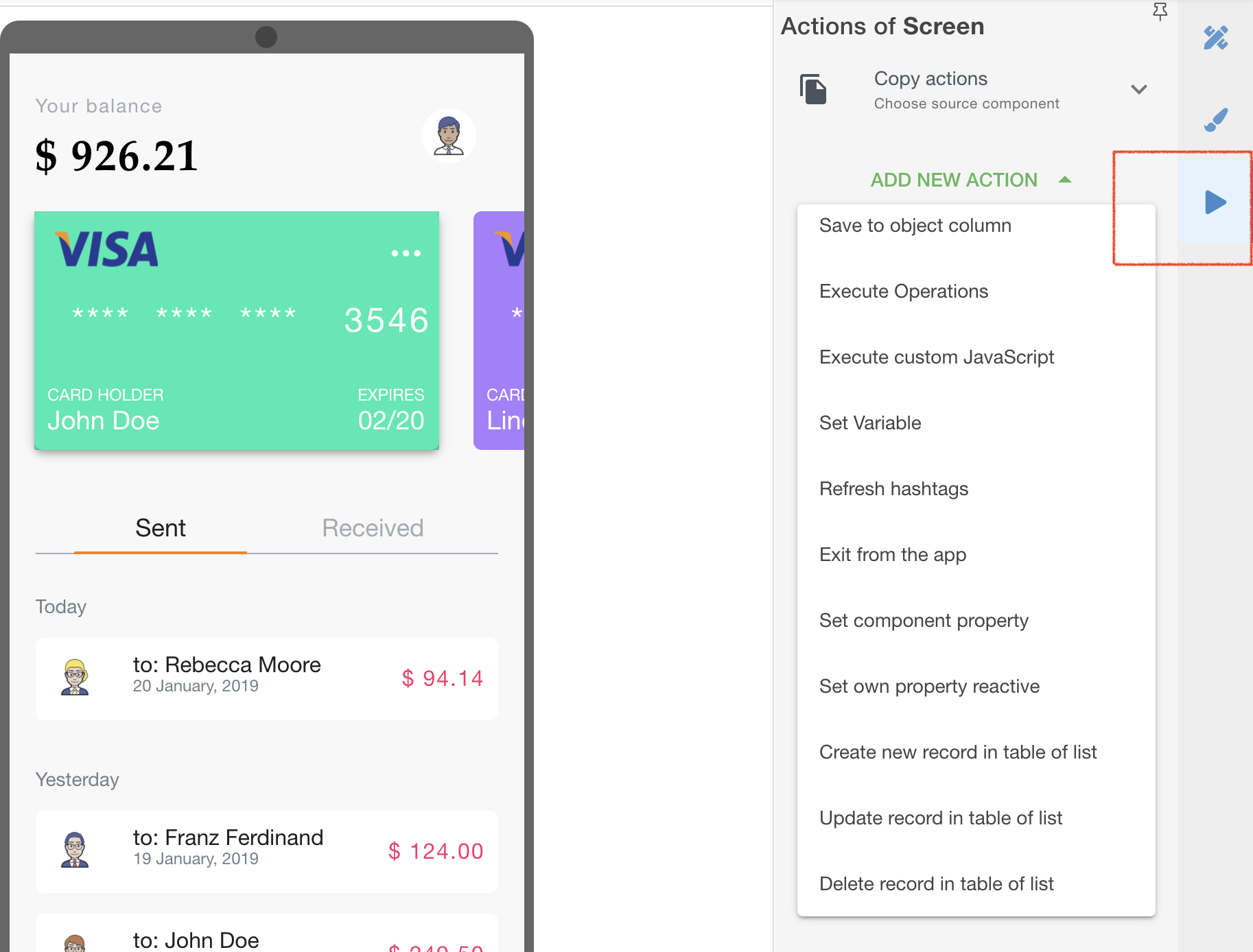Your app can have as many screens as necessary. Screens can be added, deleted, duplicated, have design properties, actions and act as menu for the app.
WE HIGHLY RECOMMEND TO BREAK YOUR APP INTO AS MANY SCREEN AS LOGIC PERMITS.
List of Screens
When in Constructor (top menu) press screens list on a left hand side (RED MARK)
You can see which screen is now selected (GREY AREA) and you can see screen's ID (ORANGE MARK)
A Screen's Menu
You can perform actions at the screen menu (RED MARK) ↓ - Duplicate = in this app, Copy to = another app, Set Home = start screen for all users, Delete = forever.
Screen's Properties
Properties tab is selected on you right (ORANGE MARK).
Set a name for it and if you want to use that screen as a left of right sliding panel type menu. In the example below a screen called Left Panel is set to slide out from the left (GREEN MARK)
Screen's Designs
You can open a left Properties panel of the screen to set:
- Make a screen to look like any other screen in your app - Copy View Settings
- Change Typography for the screen, which overrides any settings of other elements on the screen.
- Change sizing for the screen
- Change paddings and margins for the screen
- Set background color or image (makes your app heavier to load)
- Make a left or right side swipe panels of the screen.
Choose View settings of the screen to access this.
Screen's Actions
Use when you need to perform any of the platform actions on a screen load. The screen will perform them one by one. You can copy all actions from another screen, too.
Possible Actions are (RED MARK ↓)
Go to: navigate to the screen within the app or to the external URL
Scroll to: top or bottom
Create Event: created event will be stored in the Backend
- Create Payment: from a list of pre-integrated Payment service providers only
Save to Object column: selected value will be stored in specified Object column
Execute Operations: call an API operation
- Execute custom JavaScript: you can call any JS code stored on a platform here
- Set Variable: allows to use the data and pass it to different screens, change it or track the activity of app users.
- Refresh hashtags: all data points (called #hashtags# in Mobsted) used to on this screen will be re-pulled from server
- Exit the app: the user will be logged out the account
- Set component property: created event will be stored in the Backend
- Set own property reactive: created event will be stored in the Backend
- Create/Update/Delete record in table of lists: a direct way to change any dynamic or static data in Lists of Tables (APP DATA menu)
